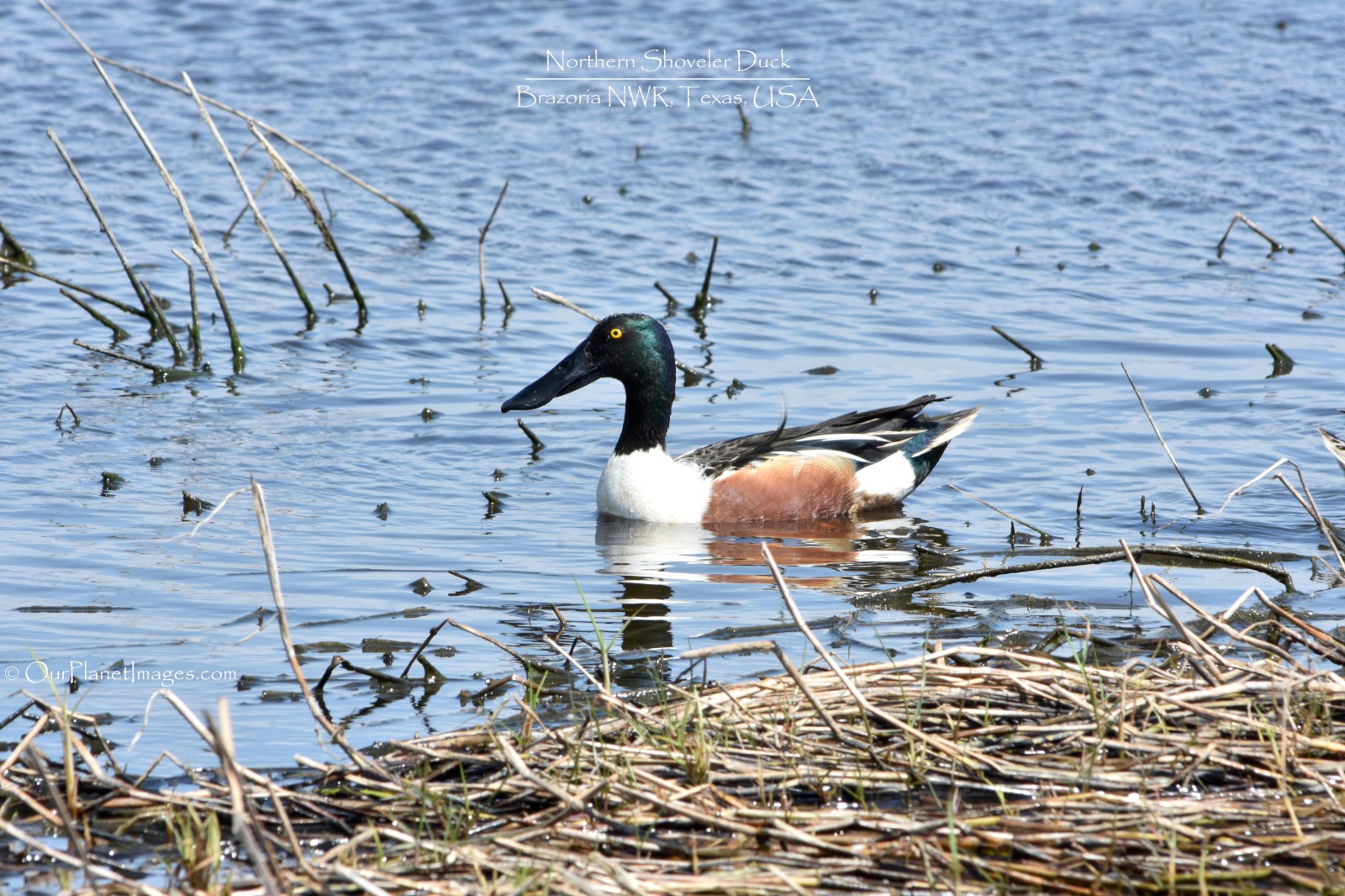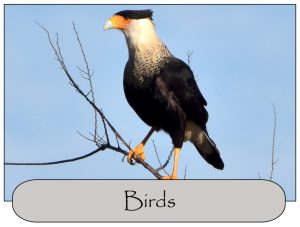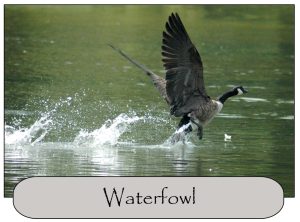The Northern Shoveler Ducks are also known as Shoveler or Spoonbill Ducks. These ducks are common throughout the northern hemisphere. They spend the summer months in the northern regions and migrate south in the colder months.
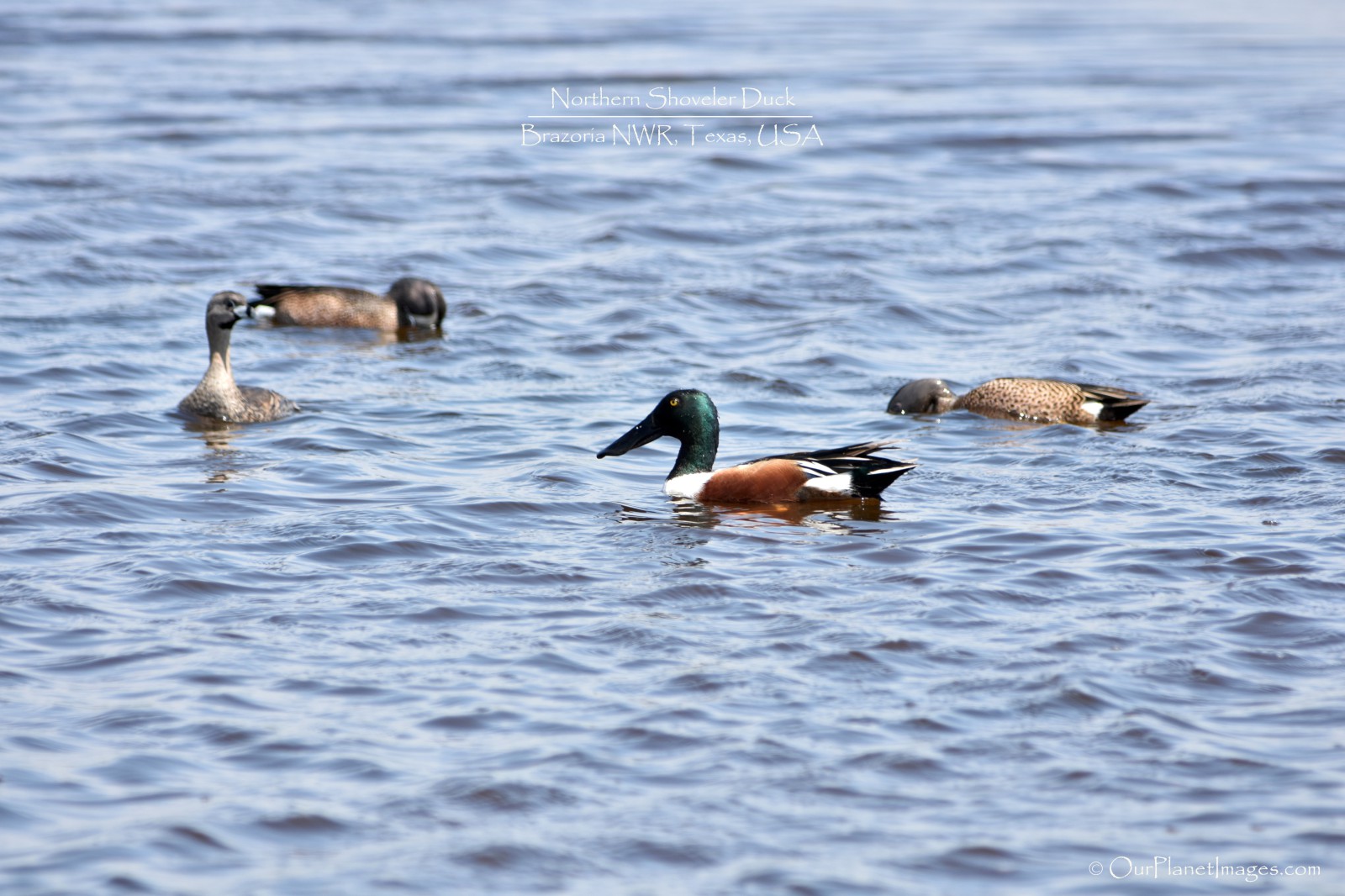
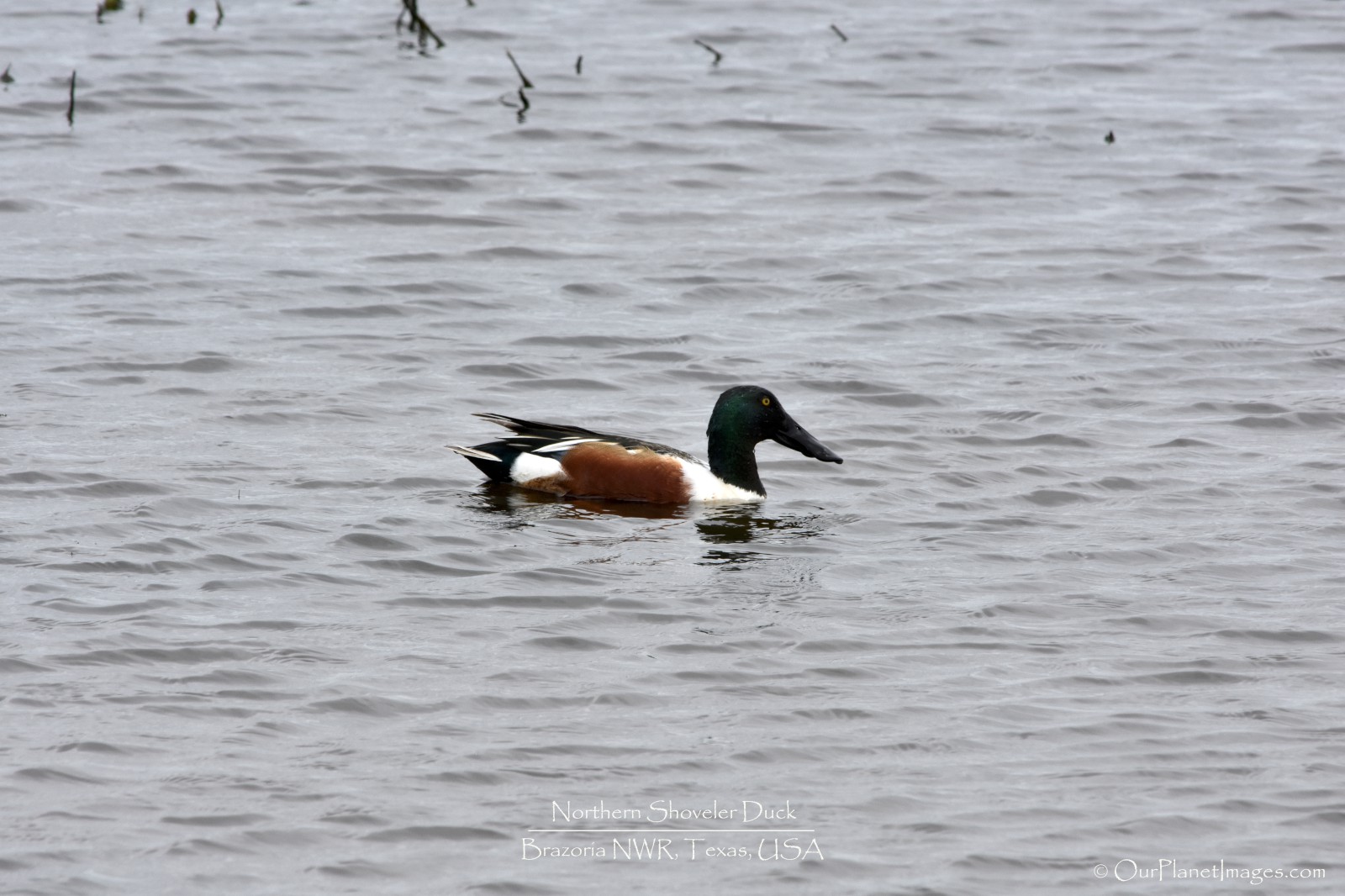
The male and female are strikingly different in their color pattern but their distinctive bill identifies then as the same species. The males have iridescent green heads that can appear black in poor lighting. Their body is white with chestnut and black. They also have a light blue patch on their wings and bright yellow eyes.
The females are less colorful their body being a spotty light and dark brown. Their eyes are dark brown and their bills are orange in contrast to the bright yellow eyes and black bills of the males.
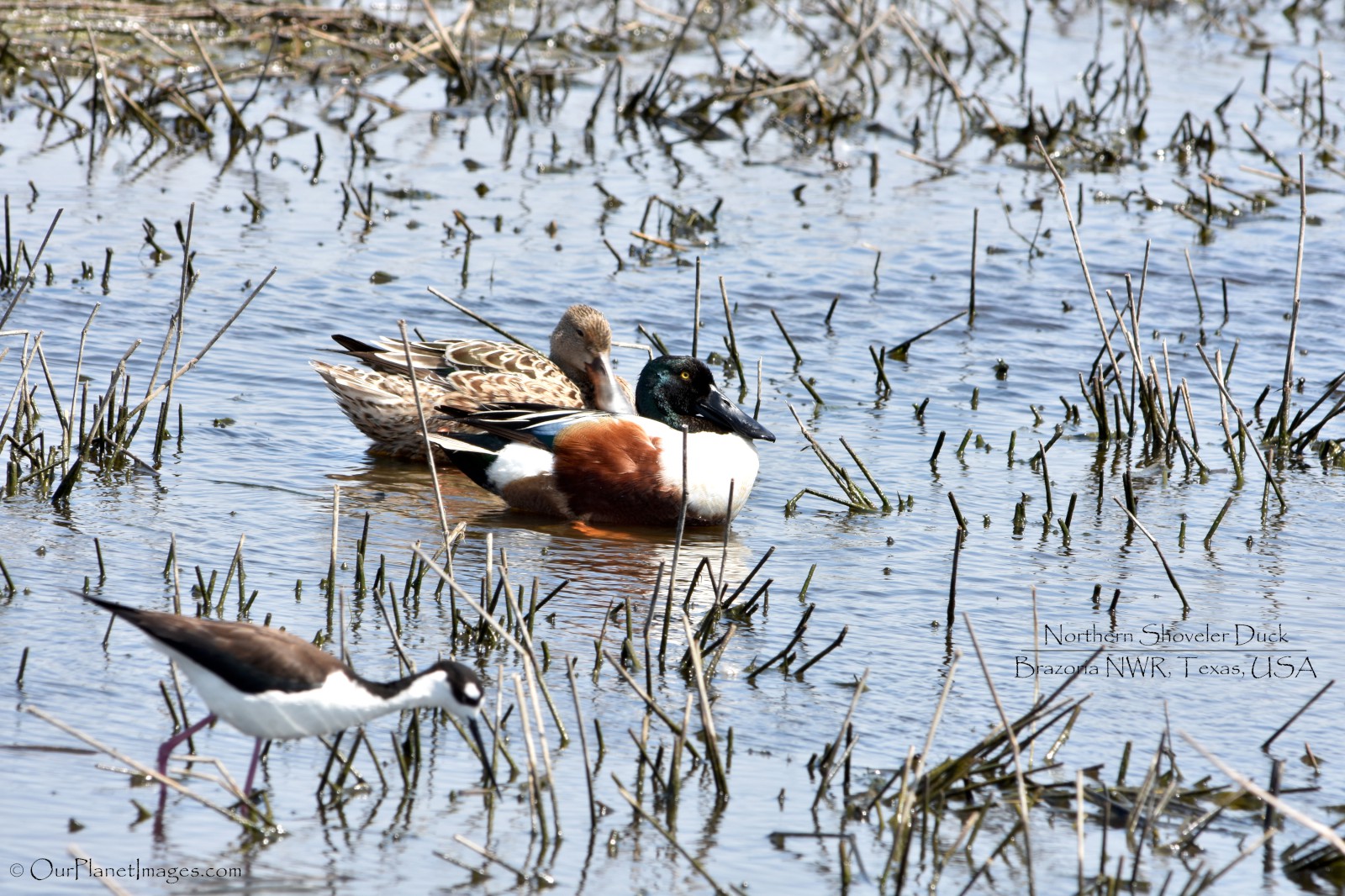
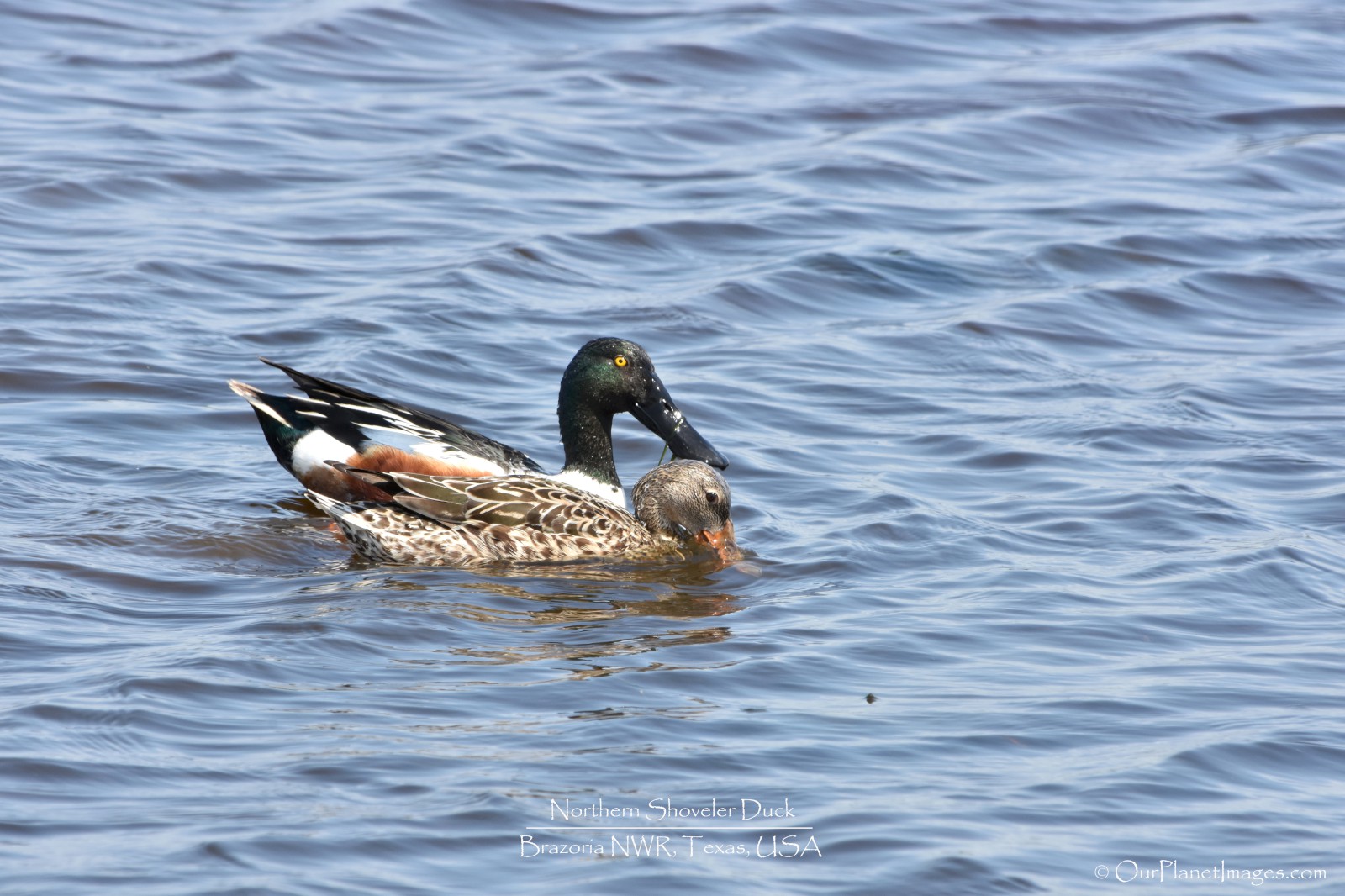
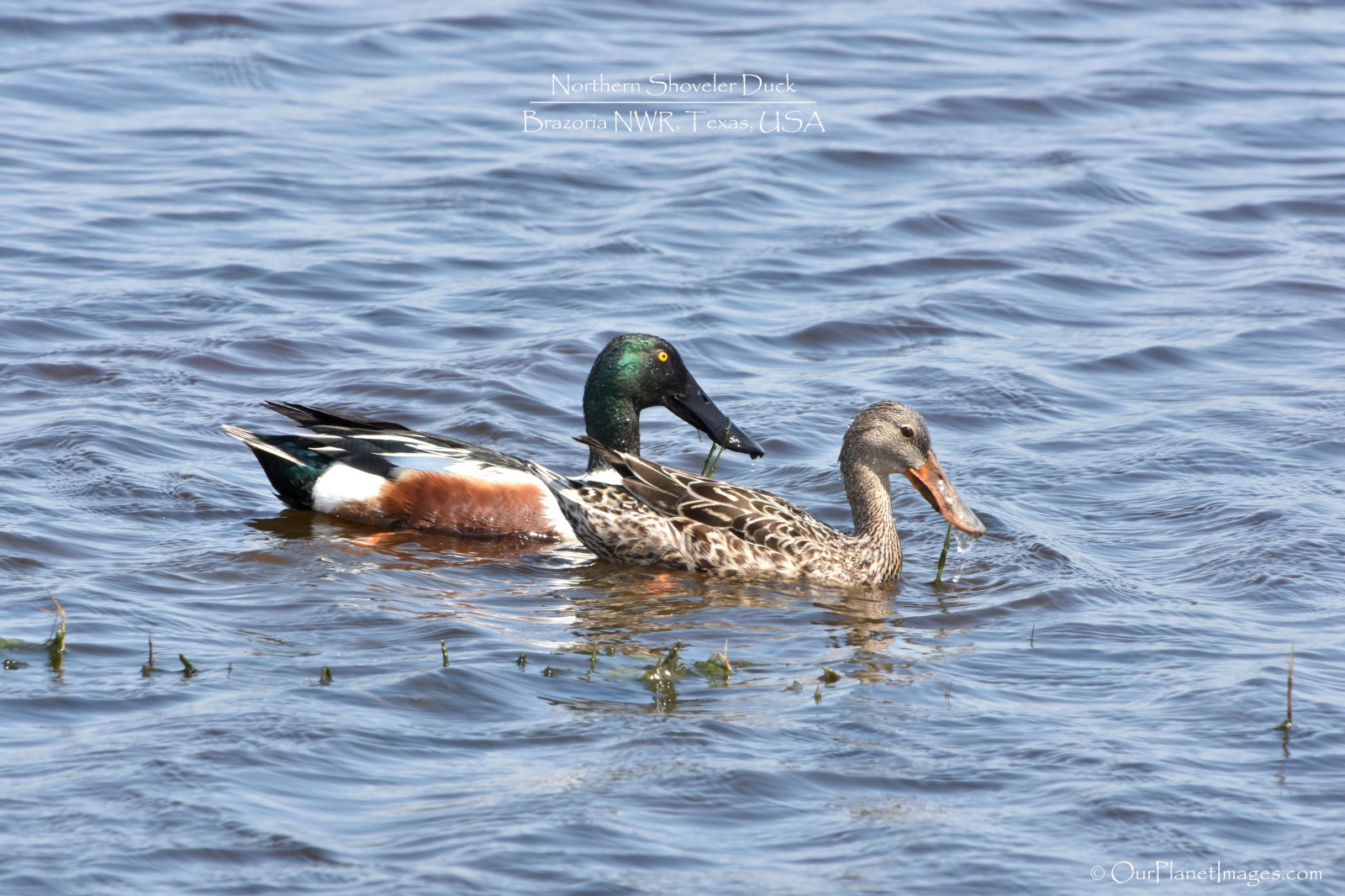

They are considered dabbling ducks which means that they prefer shallow water where they can tip their head under water and find food rather than submerging or swimming to find food but they rarely go deep enough to tip their tail straight up. This is seen in the next few pictures as both the male and female have their head underwater but their body is relatively flat to the water.
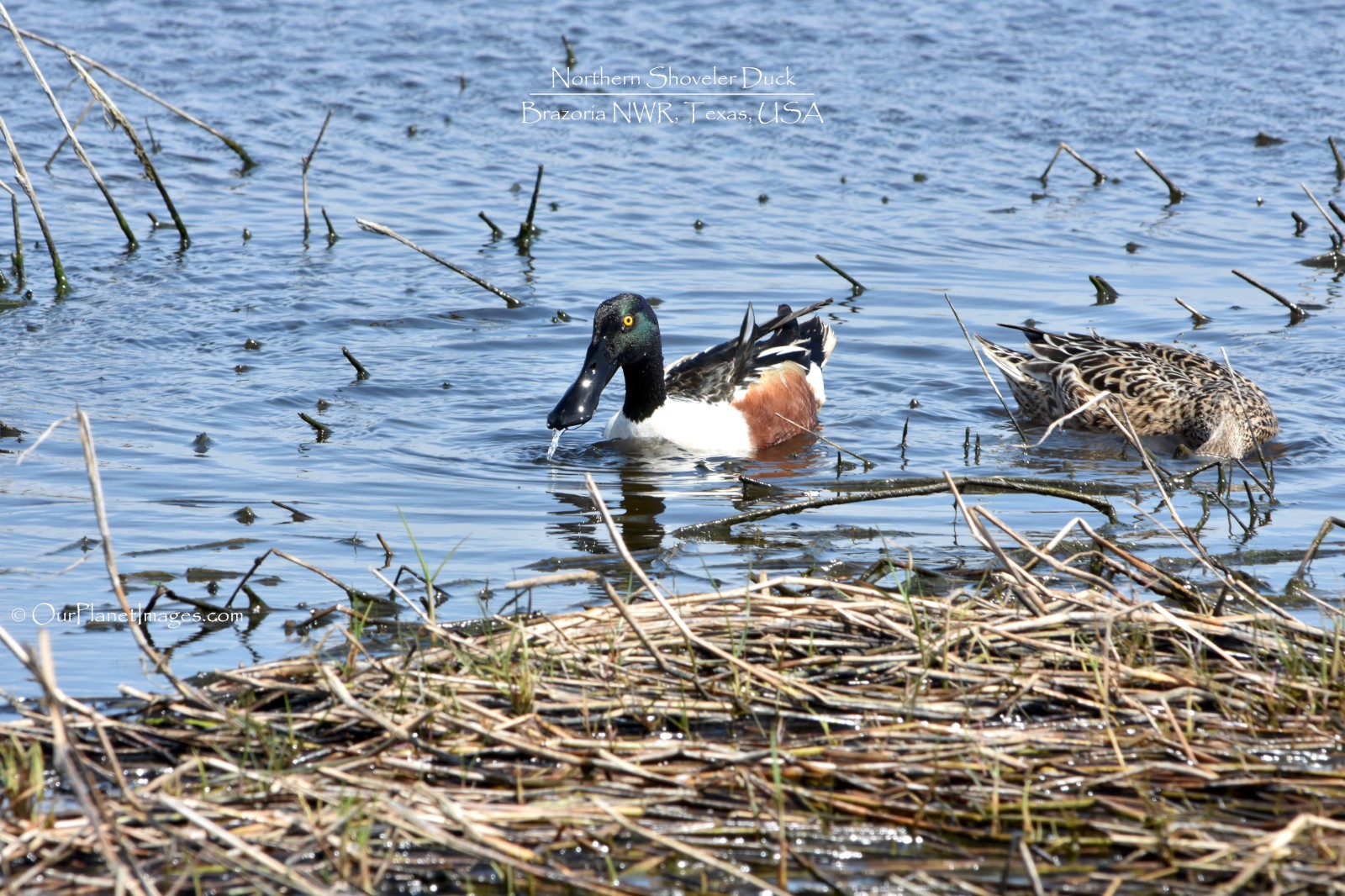

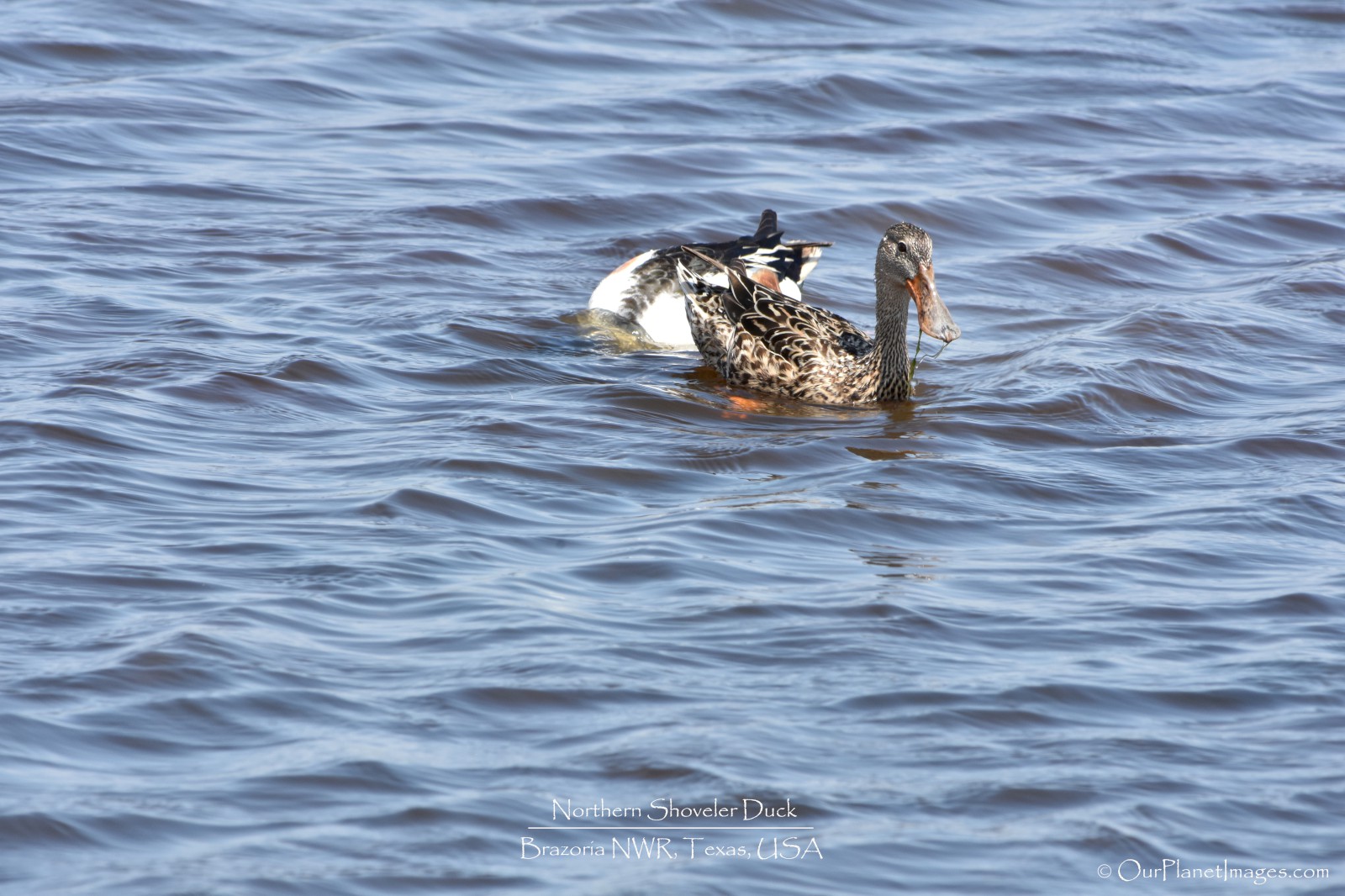
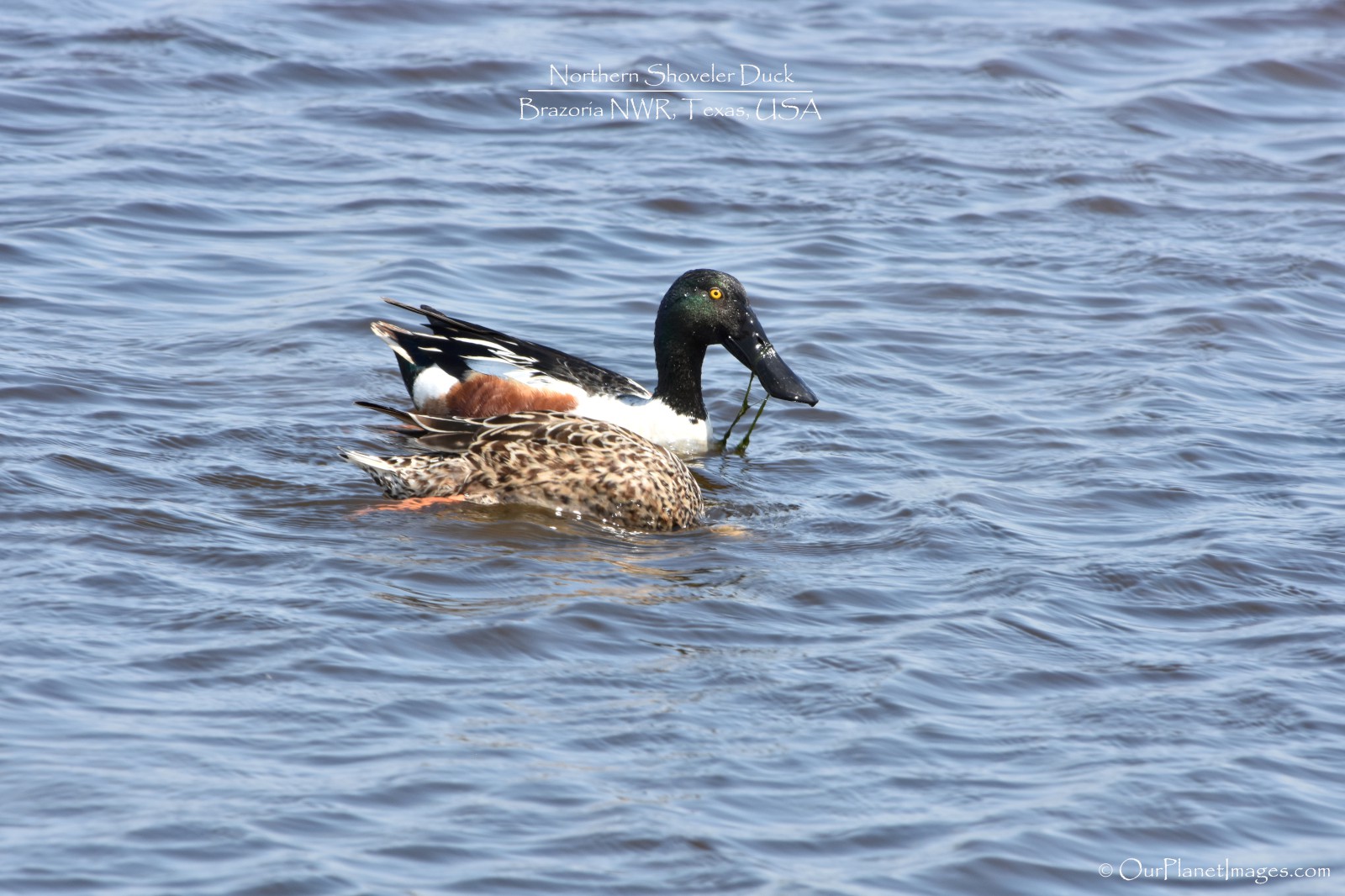
Northern Shovelers are normally seen alone or in pairs but are not typically seen in large groups however they may be seen near other species of ducks. Northern Shovelers only produce one set of chicks a year which can have between 5 to 20 chicks.

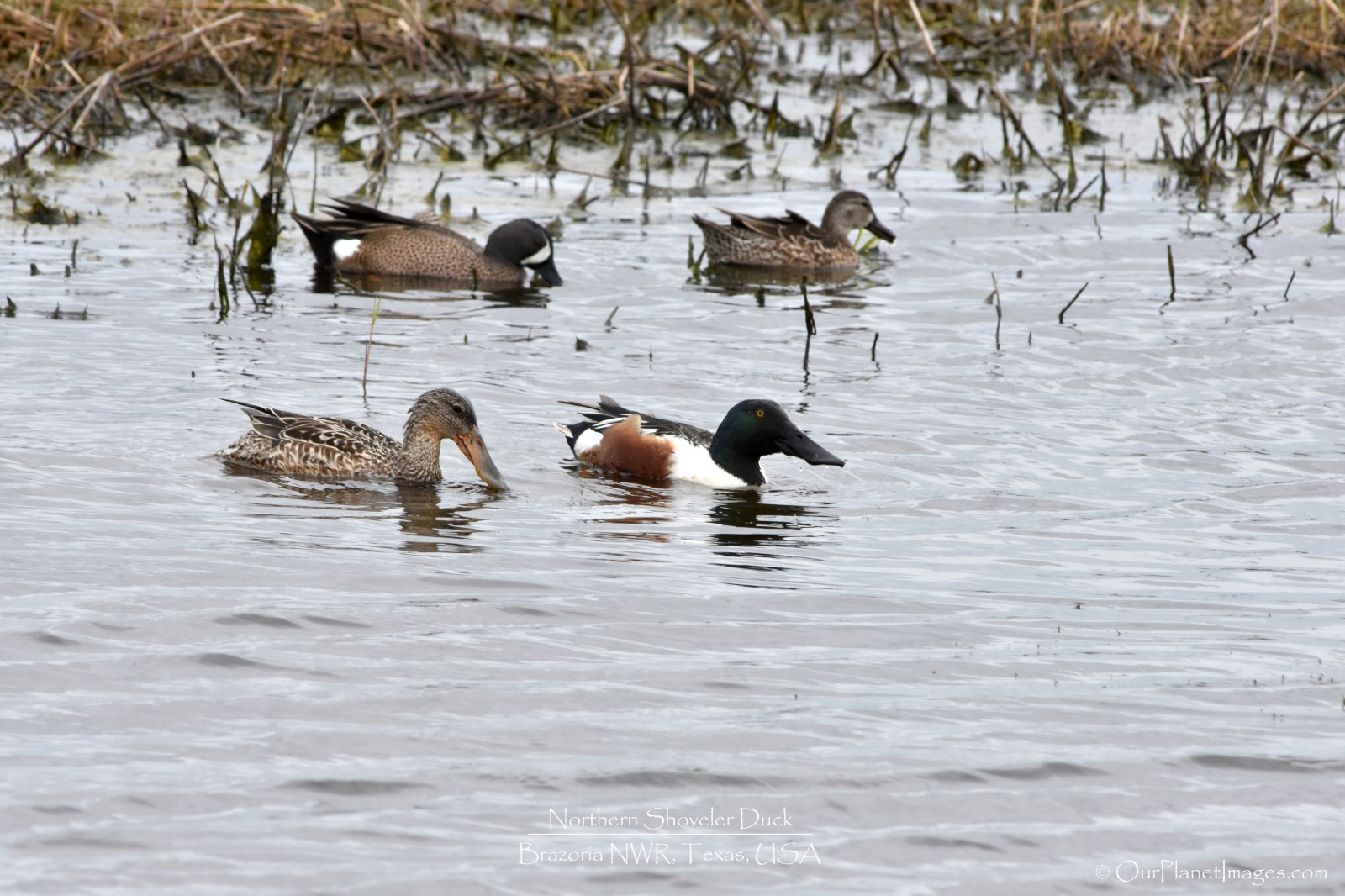
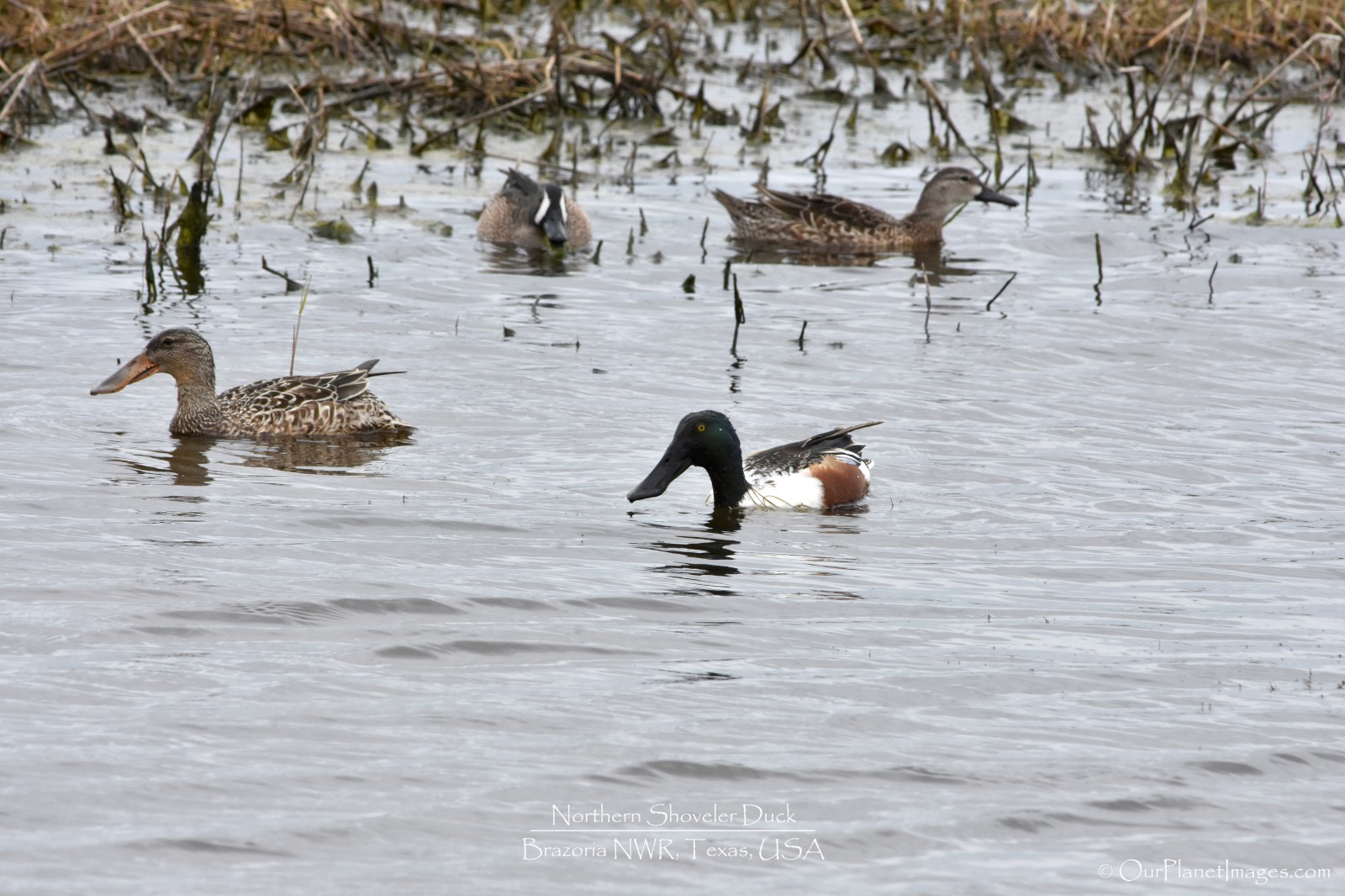
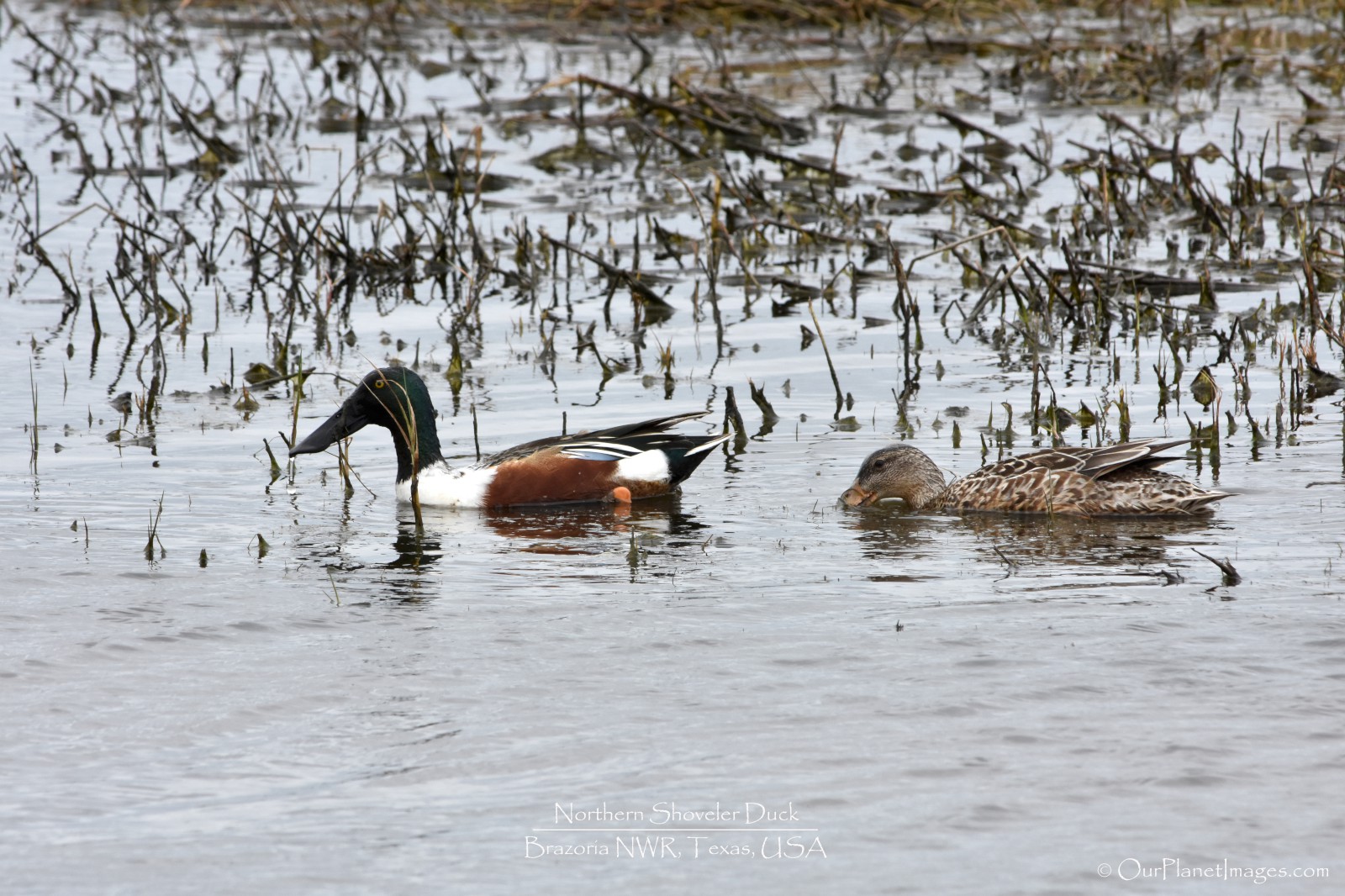
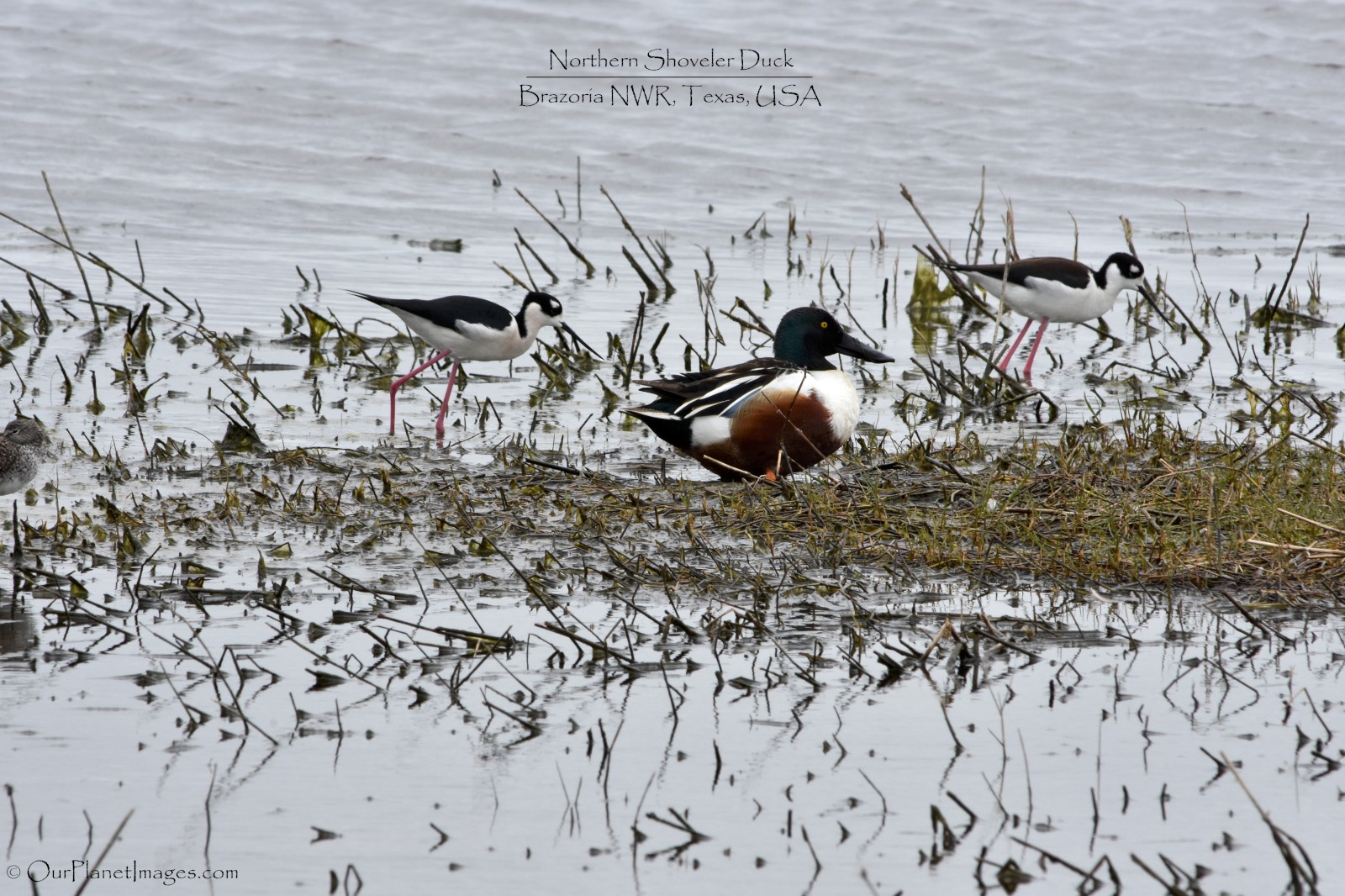

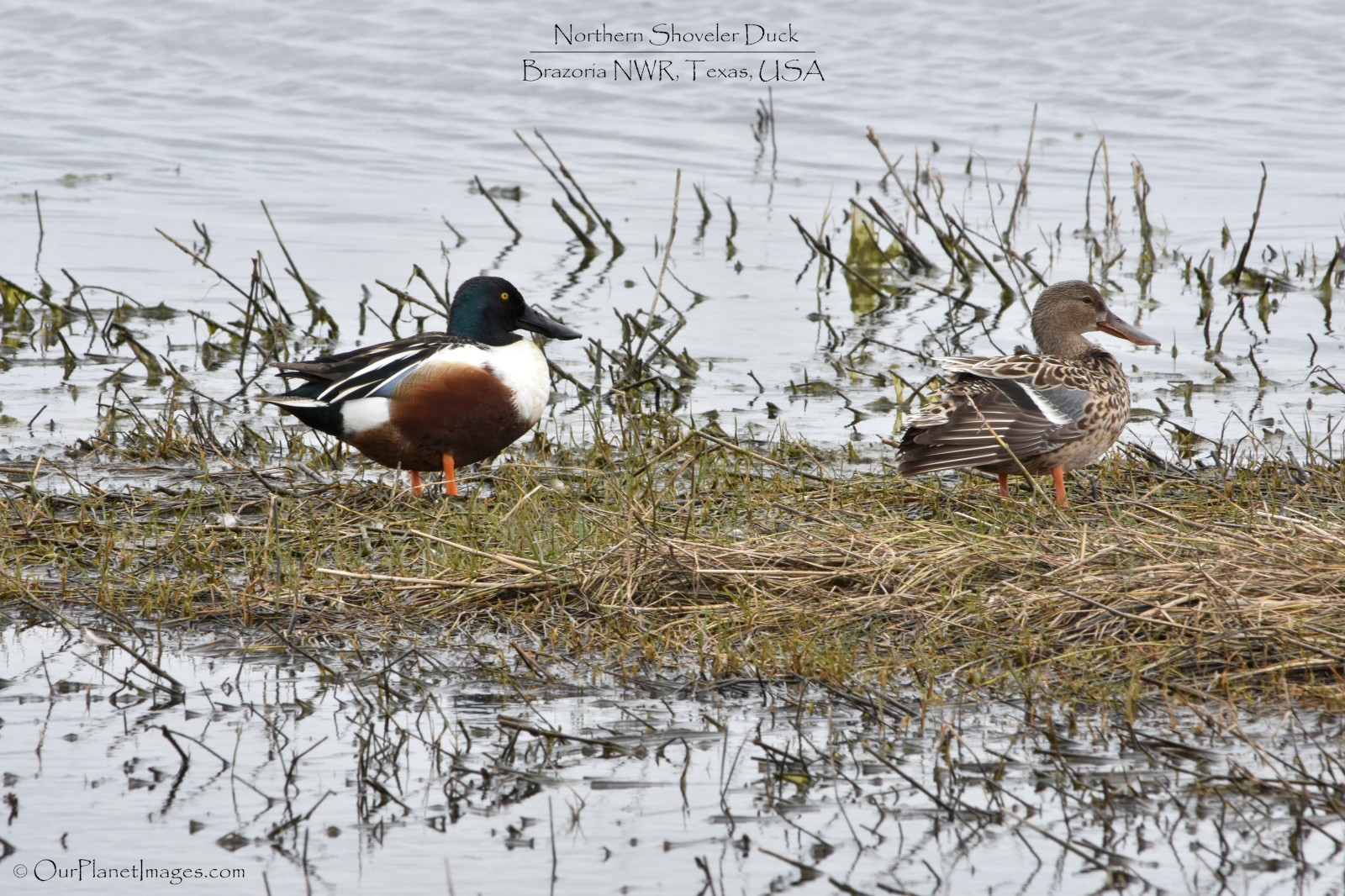
About this Bird
Family: Duck
Location: Lives throughout the Northern Hemisphere (Americas, Europe and Asia). Summer their range extends from Alaska and Central Canada south to norther New Mexico and Massachusetts. In the winter they migrate south to the southern United States.
Interesting Fact: These have the longest bill of any duck in North America and their bill is larger than their head.
Diet: Aquatic plants, aquatic insects and mollusks.
Related Posts
